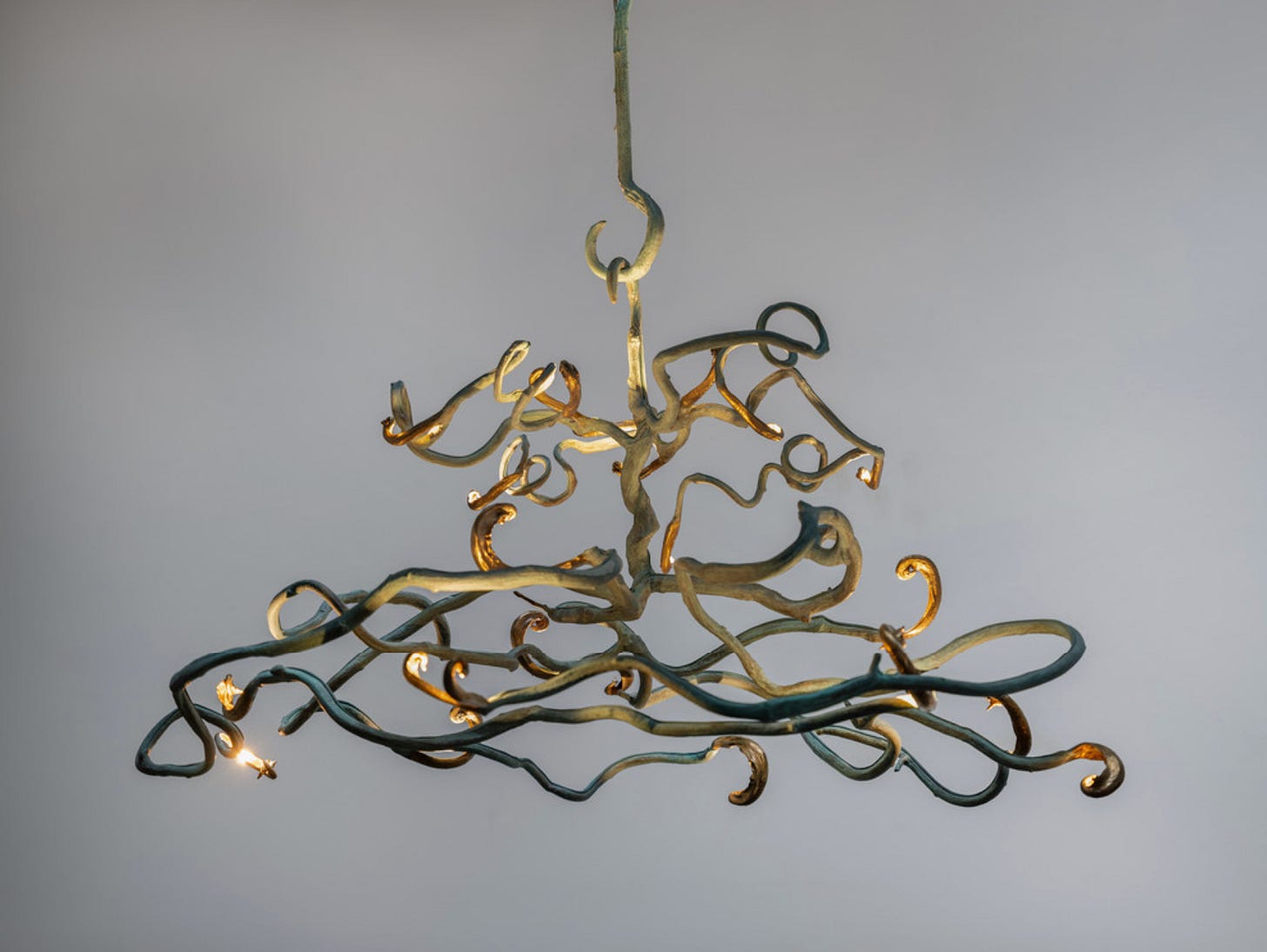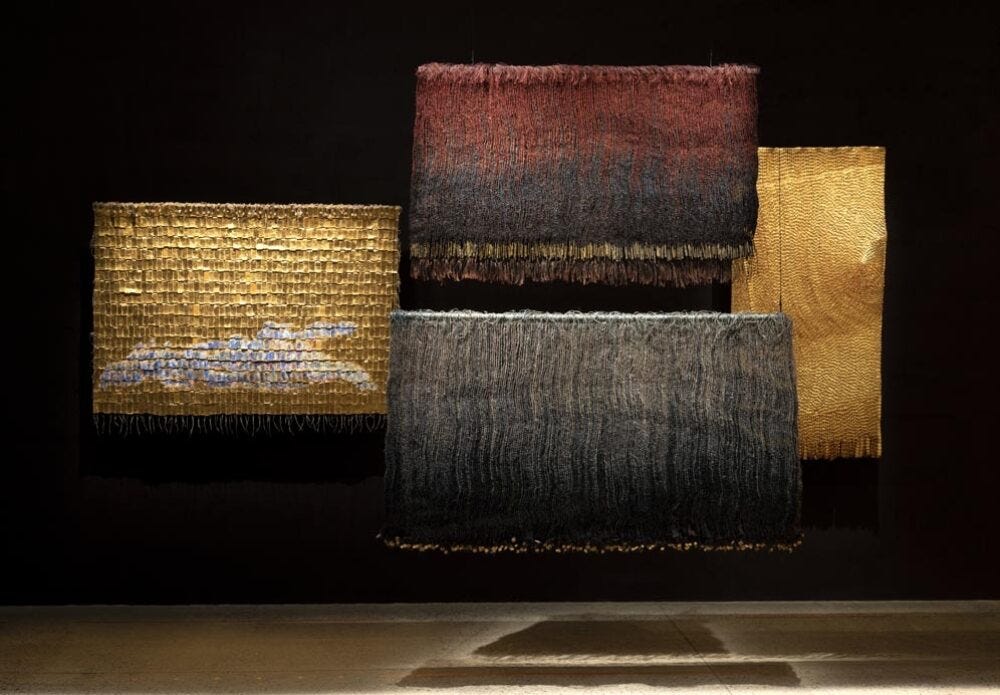On the Beauty Everyday Objects
On the daily rituals that shape us, the tools we choose to use and the magic that connects us to our ancestors. All filtered through my morning coffee routine.
I love my morning rituals. They feel a little like magic.
These small, daily devotions shape how I face the world. Who knows what waits on the other side of the door when I set out for the day, especially in the famously unpredictable theater that is New York. Maybe I’ll chart my own course, or maybe I’ll realize I’ve been a basic West Village girl all along (quelle horreur).
But I do know this: I love filling my stupid Fellow gooseneck kettle with water, setting it to a ludicrously specific 184°F, and preparing my Chemex to brew the coffee that will shield my peace as my day begins. I’m holding space for mind-altering chemicals (just caffeine, mom).
There’s something sacred in the groggy origami of folding the coffee filter. Coffee, like mathematics or religion, requires faith in invisible forces.
Then it’s three scoops of Brazilian espresso grounds. The smell when the bag first opens, nothing short of bliss. Definitely an addict’s response, but I don’t trust anyone who doesn’t have a vice.
Then comes the pour: a small one to start, just enough to wake the grounds, nothing dramatic, we don’t want to drown them. Technically, yes, you’re supposed to rinse the filter first to remove the papery taste. But I haven’t ascended to that level of fussy… yet. I like to know I have room to grow. Just like my plants, which I talk to, despite my fiancé insisting that it doesn't help them grow (logically I know this, but it’s nice to believe in something).
Maybe some of my ancestors were kitchen witches. Maybe they believed their brews were just as capable of shaping the world around them as my morning ritual shapes my inner state. My family is Cypriot, so in my imagination these fictional foremothers are priestesses of Aphrodite or Hestia, goddesses of love and the hearth.
But here’s the point: it’s the first thing I do each morning that’s for me. A quiet, analog moment before the screens. Sacred time.
Here’s the thing, though. I love my rituals, but I don’t love my tools.
I want the objects I use each morning—my kettle, my scoop, my filter holder—to be beautiful. To rise to the occasion. To feel like in their use I am elevating my physical reality to mirror the devotion with which I go through my sacred ritual. I want my tools to feel closer to art than appliances. I want them to exude meaning, texture, divinity. To hold sentimental and aesthetic weight.
This isn’t just about wanting pretty things. It’s about orientation time, intention and self.
It’s not a new desire, either. Across cultures and centuries, humans have imbued the tools of daily life with ritual significance. In The Theory of Religion, Georges Bataille writes of sacred objects as those “set apart,” not because of their intrinsic qualities, but because of the emotional and symbolic weight assigned to them. Ritual is often born in the mundane. What we handle with care becomes sacred through the handling, or so anthropologist Mary Douglas says.
And then there’s the domestic sphere: the original altar of feminist inquiry. Feminist scholars have long pointed out that the rituals of women’s work like brewing, baking, cleaning, and tending were never just labor (Silvia Federici and Anne Carson). They were devotional practices, knowledge systems passed from hand to hand. In antiquity, women’s spaces were often the sites of spiritual activity: weaving rooms doubled as shrines, kitchens as healing sites. In Greek households, the hearth was not only practical but sacred. Hestia, goddess of the hearth, received the first and last offering in any home ritual.
These gestures have historically been dismissed as “women’s work,” domestic ephemera, outside the realm of what modernity deemed Art. But feminist art historians have worked to dismantle that divide. A favourite example is in The Subversive Stitch, where Rozsika Parker traces how embroidery, once a marker of women’s creativity, was degraded into a symbol of passivity under patriarchal capitalism. The marginalization of craft was never neutral; it was deeply gendered. What was meticulous, intimate, and materially bound was excluded from the heroic, monumental canon of capital-A Art.
But the lines are being redrawn. The reevaluation of craft from decorative to political has reframed these daily rituals as forms of authorship. Of meaning-making. Of aesthetic intelligence.
In recent years, the art world and its market gatekeepers have begun a long-overdue reappraisal of craft as a central, conceptually rich, and materially virtuosic tradition. Artists like Julie Hamisky are leading this charge with works that elevate domestic ephemera into objects of reverence: gilded vessels, ceremonial spoons, and other handcrafted forms that blur the line between function and fetish.
Olga de Amaral’s luminous woven tapestries, once relegated to the category of textile art, are now celebrated as immersive sculptural environments, commanding six figures at auction and pride of place in institutional collections.
Magdalene Odundo’s hand-coiled ceramic vessels defy the Eurocentric hierarchy that once separated "craft" from "fine art," drawing on Kenyan, Nigerian, and British influences to assert an aesthetics of embodied knowledge.
These artists remind us that tactility, repetition, and material intelligence are not secondary to concept. They are the concept. The art world, at last, seems to be catching up.
This isn’t confined to markets either. Major institutions are staging shows that celebrate the aesthetic value of textile, ceramic, and fiber works, and even interrogate the very hierarchies that once excluded them. Exhibitions like Woven Histories: Textiles and Modern Abstraction at MoMA/LACMA, or Making Knowing: Craft in Art, 1950–2019 at the Whitney, have reframed craft not as a decorative aside but as a vehicle for political expression, conceptual rigor, and feminist critique. These shows go beyond simple inclusion; they question why it was ever left out. Curators are increasingly attuned to how gendered labor, cultural lineage, and embodied practice intersect in these mediums. The result is a more expansive canon more representative of the full scope of human creativity. Finally.
This is the legacy I feel in my fingertips when I fold a coffee filter or set a kettle to boil. A small echo of something older…or kitchen witchier. A kind of slow magic rooted in repetition, attention, and care.
Good tools become companions.
So when I say I want my coffee tools to feel like ritual objects, what I mean is: I want them to honor that inheritance. To dignify the small devotions. To affirm that those unseen and uncelebrated things that happen in the first five minutes of the day matter.











Beautiful. Would love to hear yoiur thoughts on the L'Arte povera movement
The quiet intimacy between form and ritual, and the desire for your objects to meet you where your intention lives. The kettle/184°F moment made me laugh in solidarity. There’s something holy in our micro precision. More of this always!